Letters from Japan #3 - When is a light up bus not a light up bus?
Omotenashi in action in the back streets of Kanazawa
Kanazawa is a Samurai town, with a history of prosperity and cultural excellence. Like Kyoto the city survived WWII bombing raids which means there a several historical districts that are still intact. The fact that the Tokyo Kanazawa shinkansen did not arrive in the city until 2015 means it has also escaped the tumble of over tourism that plagues its better-known counterpart.
Looking back over my journal for Kanazawa the words kindness and warmth pop up so often. As a tourist I’m very aware of how irritating we can be, how easy it is to be thoughtless about the fact that I am stepping into someone’s daily life. Some places I visit (usually in the UK) are quick to show me the error of my ways. Not so Japan. It’s a place that embraces welcome, calm and kindness - at least outwardly and to guests.
What made Kanazawa so special? Perhaps for me it was the contrast to Tokyo? Kanazawa is a city of 462,000 people as opposed to Tokyo’s 12 million. It’s compact, peppered with ancient streets and houses from the Edo period, home to Kenrokuen Garden, one of the three great gardens of Japan and has built a reputation as a national centre for crafts and creativity. Writing this I’m not surprised it’s the place that felt like somewhere I could belong.
As with anywhere it is the people that make a place and rather than tell you about the sights and galleries (there are many excellent guide books for that), I want to tell you about one fantastic evening, which embodied the concept of omotenashi, and demonstrated the reputation Japan has for offering exceptional hospitality to visitors.
When is a light up bus not a light up bus?
I’m an inveterate planner and as a traveller with M.E. I’m always on the hunt for ways to see a lot of a place without exhausting myself. During my trawl of tourist leaflets in our hotel, I noticed an ad for the Kanazawa Light Up Bus. I realise now that my imagination went to entirely different continents as I imagined something akin to the painted buses of India, and possibly a Japanese version of Blackpool illuminations. I may have got a little over excited. Nonetheless, plans were made, we wandered to the stop, hopped on a bus that bore a striking resemblance to the one we’d ridden that morning and began our tour.
After about fifteen minutes I had to concede that I had perhaps misunderstood what the Kanazawa Light Up Bus had to offer. Rather than the exuberant extravaganza of my imagination, this was in fact a very useful bus that ran on a Saturday night to take tourists around the city. There were lights on account of it being night and many of the areas looked very nice, but that’s as far as the illumination went. This creeping realisation combined with an impatient bladder led to a bold move of hopping off the bus and hopping off schedule.
We found ourselves on a street we recognised from earlier in the day and dived into the nearest bar. What part of us didn’t register that it was called Song Bar Karen, I’m not sure. The door creaked open, revealing what looked like someone’s living room, complete with woodchip wallpaper and artificial flowers. Heads turned. I hesitated. Arms opened and smiles broke. We walked in. Behind the bar was a small smiley lady who showed us our menu. Beer and songs for a very reasonable rate. If we wanted to sing. Which of course our restrained English ridiculousness balked at. Panic (and bladder needs) meant we paid and sat, thinking we’d drink our beers at record speed and head out into the night. As if. The place was in full song – around ten people, all Japanese, were celebrating a birthday. The birthday girl, who the owner gleefully informed me was a doctor, was belting out Bonnie Tyler, two or three besuited men were practising their English on S., and our lovely host was giving us more and more snacks to go with our beer. It felt as crazy and community-like as our local pub back home. We stayed for two beers, ate many dishes of rice crackers, answered numerous questions about what we were doing and what we liked about Kanazawa, and loved every moment. My only regret is that we didn’t sing. Next time.
We said our goodbyes (sayonara, sayonara) smiled our way out with numerous effusive arigato gozimas and set about finding somewhere to eat. Japan eats early – even in Tokyo we struggled to find food after around 10.00. and time was getting on. We got a little lost, I felt a mild panic (I never like the prospect of missing dinner) and buoyed by our earlier “lets just go in here” experience we headed into the nearest place. I knew the kind of food – Yakiniku - and knew that it wasn’t fish based. That’s as far as my preparation went.
We went through the noren curtains (used on most restaurants to show they are open and serving food) and indicated that we would like a table for two by holding up two fingers and saying ni in the customary fashion. Seating agreed, we took our shoes off, trying to avoid the inevitable inelegance that accompanies balancing on one leg whilst trying to undo multiple straps on my oh so comfy, oh so cool and oh so unsuited to Japanese culture DM sandals.
Yakiniku is basically grilled meat, but with lots of extras like enoki mushrooms and piquant pickles. The main feature of Yakiniku is that you cook your food yourself, on a grill set in to the table. I’d heard of it and seen it on TV (Tokyo Vice yet again) but this was my first real life experience. The restaurant had a handy card to show us what to do.
It also happened to have a table of super friendly people eager to make sure we cooked everything properly. Through a mix of hand signals, giggles, google translate and simple hands-on demo, our dinner companions made sure we cooked everything beautifully. As conversation went on we mentioned that we were celebrating S’s fiftieth, cheers and sake began to flow, a couple from another table came over to give us a bottle of shochu (a potent drink made from sweet potato that hails from Kyushu) I tried to speak a little more Japanese (more cheers) – you get the picture.
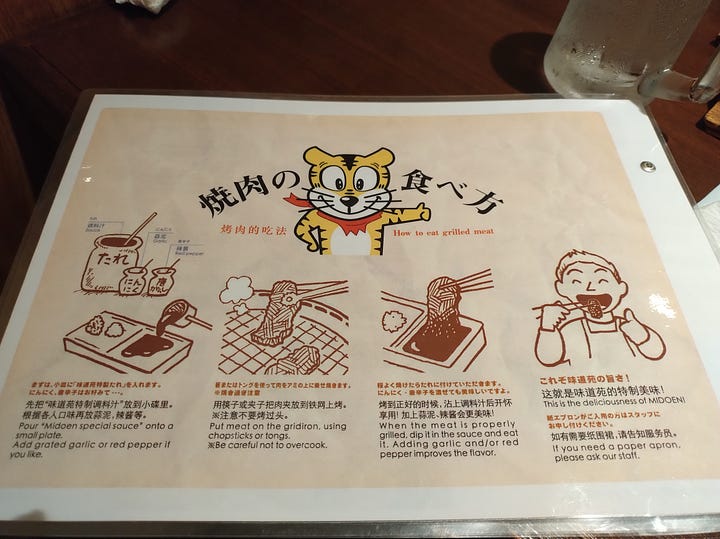
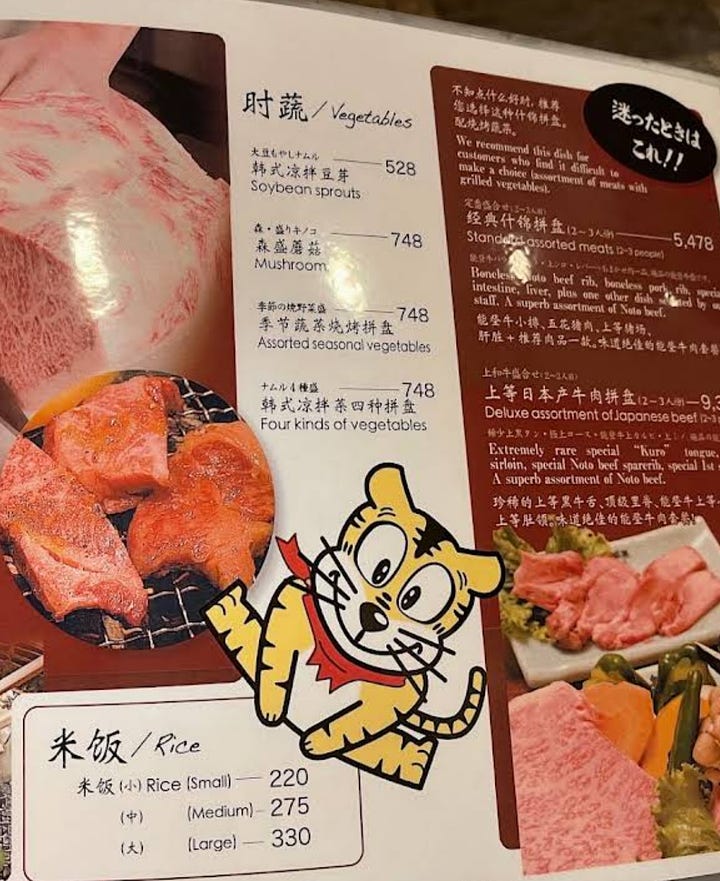
Meal enjoyed, company enjoyed even more, it was time to head off in preparation for our early train the next day. Kanazawa had one more surprise for us. As we came to pay, our waiter said that our neighbours would like to pay half our bill, if we would allow them to. We knew that etiquette is a huge deal in Japan, and we knew there are a lot of rules around gift giving, refusal and acceptance. What we didn’t know was the correct thing to do in this situation. I asked our waiter who was characteristically non-committal (remember wholehearted hospitality – it would be wrong to cause offence by making us do something we’re not comfortable with). We took a chance and accepted the offer with smiling grace and a huge amount of hope that this was the right choice. It was. Broad smiles and more goodbyes meant we floated home on a cloud of good feeling, good food and possibly good sake. We were also slightly in awe at the level of welcome we’d enjoyed.
Hospitality from those who are trained and paid to serve is one thing. Hospitality from strangers with nothing to gain is another thing entirely. For me that is the essence of Omotenashi.
I’ll write again next week when I’ll be looking at the philosophy of Ikigai – finding one’s purpose. Since Kanazawa is the home of crafts it seems an ideal place to begin the exploration of what to my mind is one of the most central Japanese philosophies.
If you've enjoyed reading This Wild Feeling send me some love! Click the hearts, leave a comment, restack, with a note if you're feeling fancy, or share on your favourite social media ❤️
On New year's day 2024 a magnitude 7.6 earthquake struck the Noto Peninsula in the northern part of the Ishikawa Prefecture. The quake and its accompanying tsunami caused widespread destruction, some 232 people lost their lives, and tens of thousands had to evacuate their homes. Kanazawa itself experienced lighter damage than other areas, but still felt the impact on infrastructure. The area is rebuilding and restoring confidence in those who seek to explore this beautiful part of Japan.




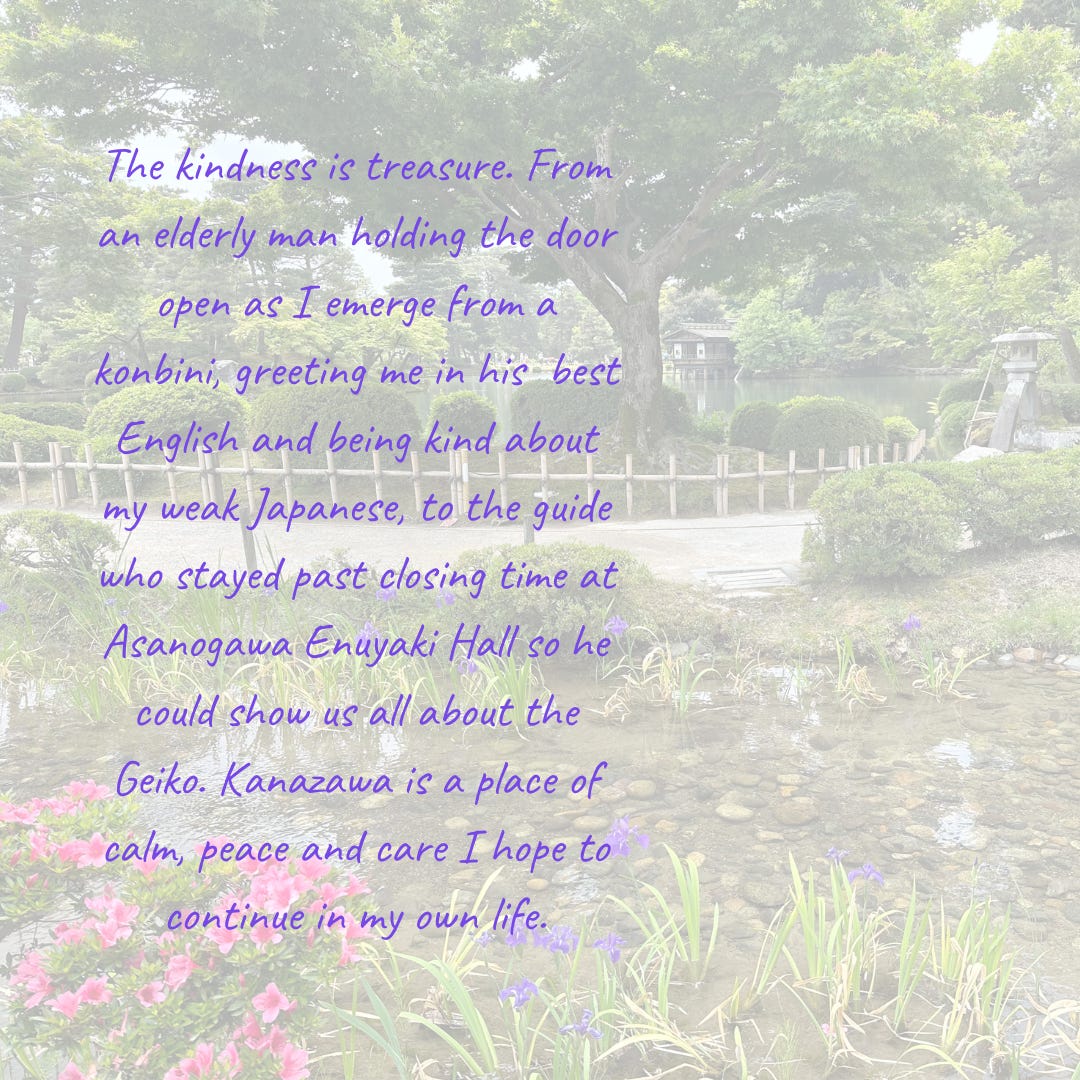
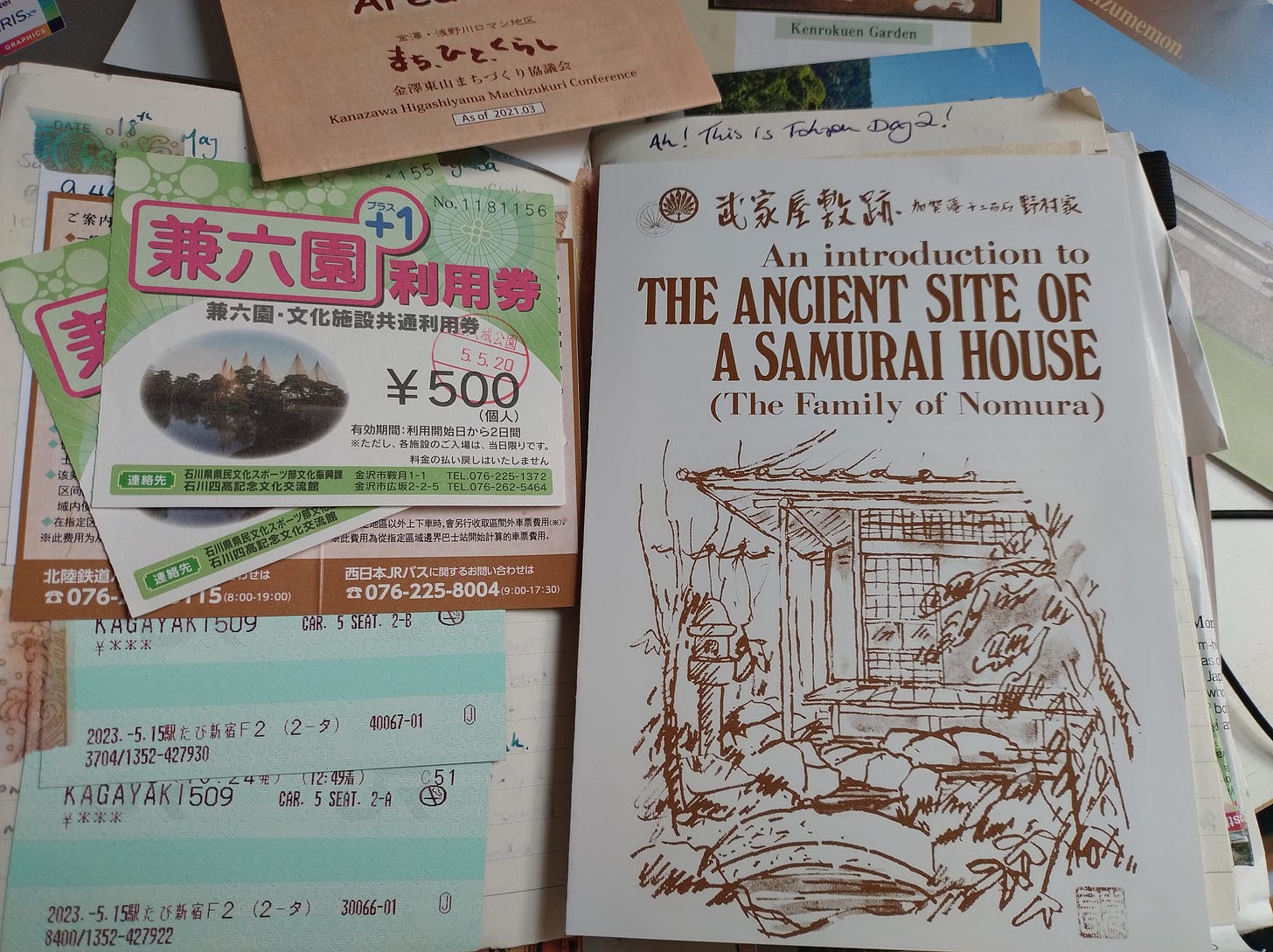
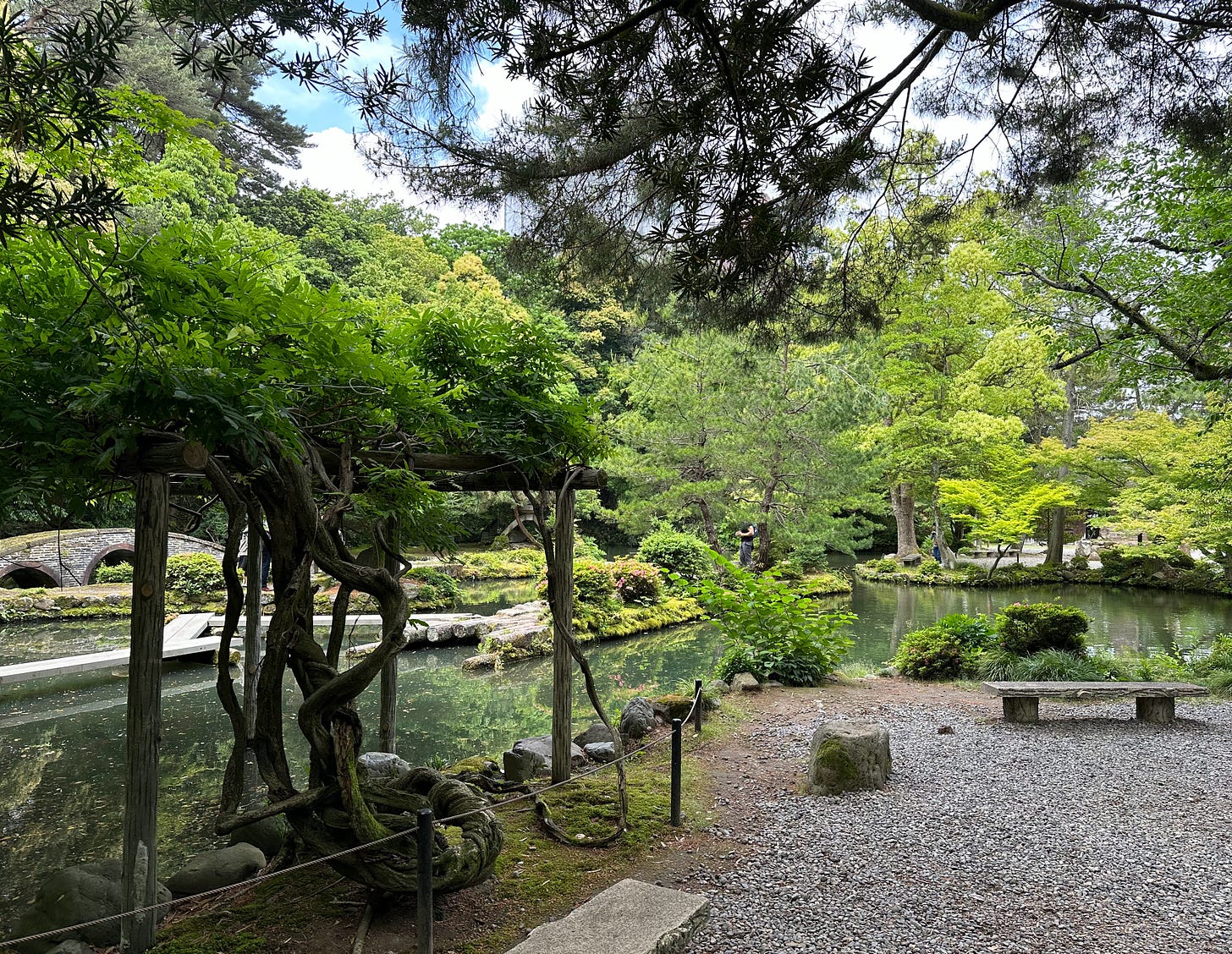
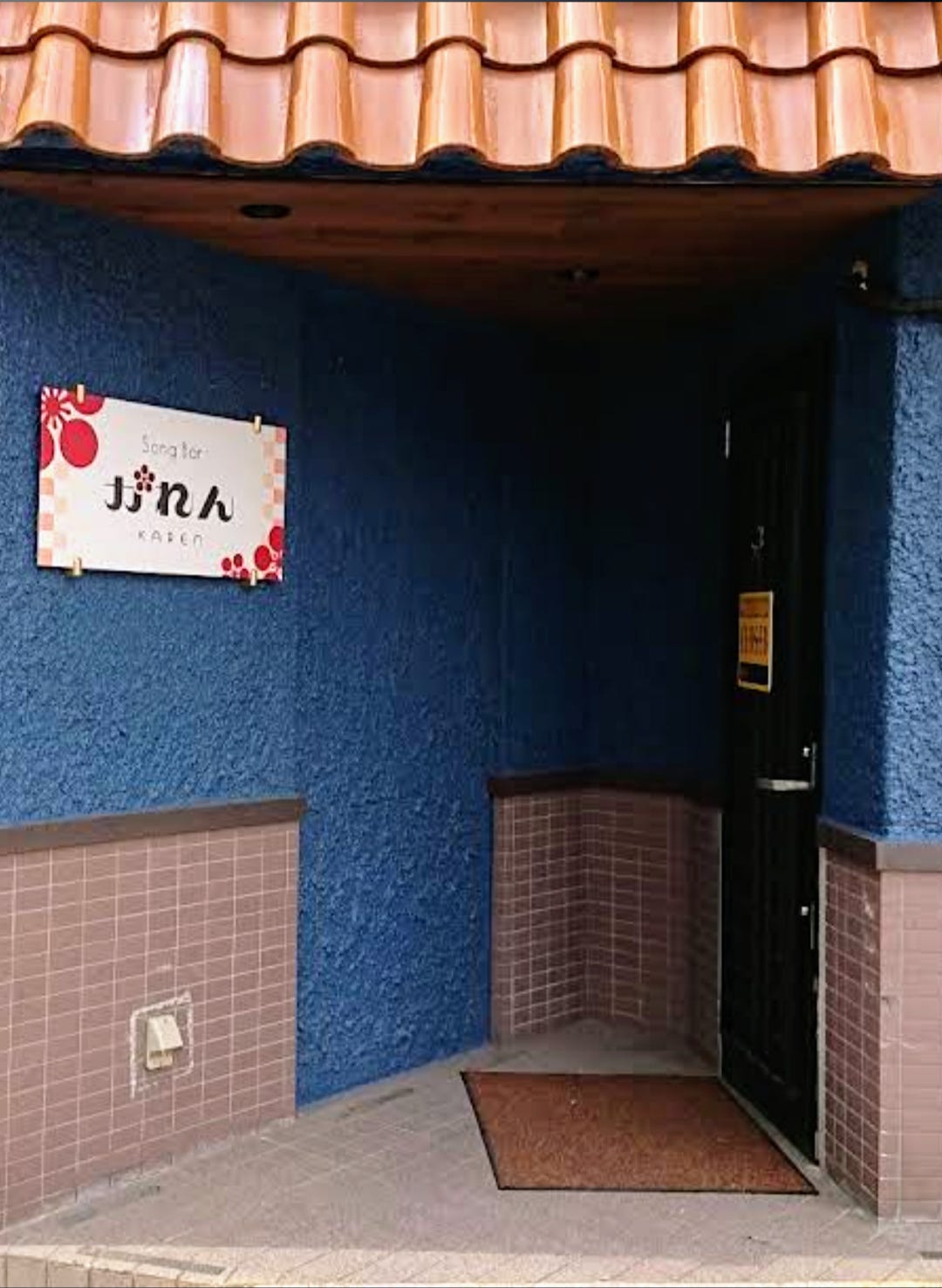
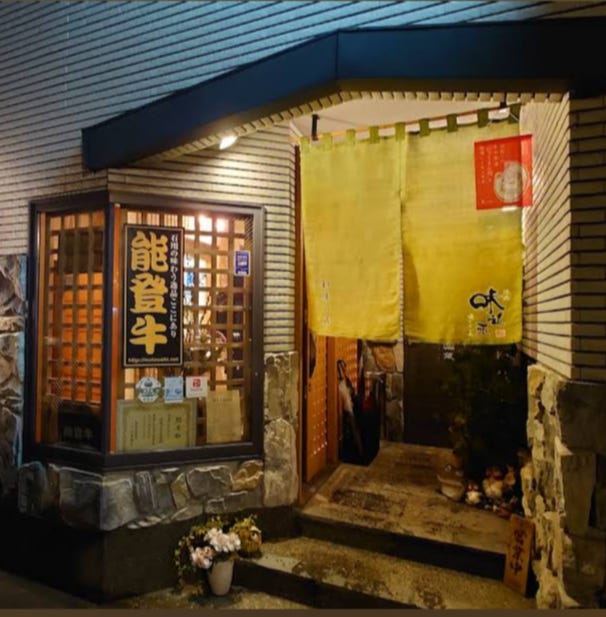


I was in Japan in 2008 and it’s still one of my trips ever.
Thank you for sharing that Kathryn, how wonderful,so interesting, so many lovely friendly people in the world, so pleased for you. An antidote to our media stories.